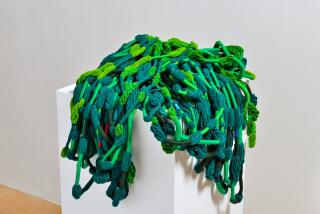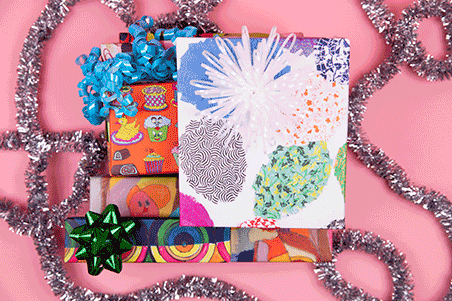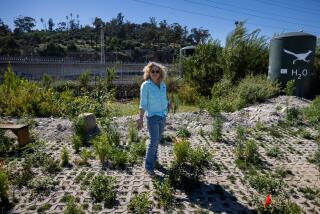HOLLYWOOD
- Share via
Last year Kazuo Kadonaga went to Japan and purchased a huge supply of silkworms. Cozy in pupae that resemble Styrofoam packing confetti, the little worms probably never guessed that, unlike their ancestors who gave their lives for haute couture, they were destined to die in the name of modern art. Kadonaga constructed housing for his larvae in the form of geometric honeycombs designed to accommodate one worm per square compartment. Having inserted the worms into their assigned slots, he treated the pupae with heat, thus arresting the silk-making process (and killing the worms). Alas, an entire generation of butterflies snuffed out in the wink of an eye.
Kadonaga describes his work as attempting “to allow the beauty inherent in natural materials to assert itself with a minimum of intervention.” A previous project, for example, found him cutting a block of wood from a tree; the subsequent splitting and swelling that occurred as the material dried was the only “process” that acted upon the object. With that piece, Kadonaga succeeded in his attempt to reveal and slightly enhance an already existing process. However, the methods employed in his latest project--titled “Silk No. 1”--seem a bit more heavy-handed.
Ecologists probably won’t approve of his means, but they’d have a hard time denying the eerie beauty of the resulting work. Stacked salon style on the wall, the honeycombs are surprisingly varied in appearance. Pieces that were treated with heat at an early stage have a raw, mechanical look, while those allowed to develop a bit longer are encased in a gauzy veil of silk. There’s a poignant fragility about “Silk No. 1,” possibly because the scent of death is heavy. (Space, 6015 Santa Monica Blvd., to March 28.)
More to Read
The biggest entertainment stories
Get our big stories about Hollywood, film, television, music, arts, culture and more right in your inbox as soon as they publish.
You may occasionally receive promotional content from the Los Angeles Times.










